
Fifty-five years ago, growing public concern for the environment alongside nationwide organizing against the Vietnam War led to what is still considered the largest non-secular protest in America’s history: the first Earth Day on April 22nd, 1970. Rachael Carson’s Silent Spring had been circulating for most of a decade. In 1969, the nationally televised Union Oil spill off the Santa Barbara coast shocked the country as it leaked over 4 million gallons of crude oil, coating more than twelve miles of coastline and killing thousands of seabirds, dolphins, seals, and sea lions without penalty.
Across the country, people from all walks of life and political affiliations joined in the first Earth Day efforts, including rallies, marches, and teach-ins. Among them was McKenzie River Trust friend and Board Member Bob Warren. “That moment changed the trajectory of my life,” shared Bob, who attended a talk at Cal State Long Beach. “At the time, I had just completed my Bachelor’s Degree in Business Administration and was preparing to enter a Master’s program. I had taken up scuba diving in college and was a big admirer of Jacques Cousteau. When I heard he would speak at the event, I knew I wanted to be there.” Though Bob doesn’t remember exactly what was said during the event, looking back, he sees it as a moment of divergence away from his planned business career toward one a little bit closer to the land.
“It’s easy to forget how dire things were,” notes Bob. Cities were cloaked by smog, and rivers and lakes were contaminated with industrial waste, pollutants, and raw sewage, making them unsafe for drinking water or recreation. The cumulative impacts of unregulated industry became too much for the American people. By the end of 1970, Congress enacted the bipartisan National Environmental Policy Act (NEPA), which ensured that federal agencies considered environmental consequences in their decision-making. That year, they also worked across the aisle to amend the Clean Air Act, leading to then-President Nixon’s establishment of the Environmental Protection Agency (EPA) to protect human health and the environment. In 1972, the Federal Water Pollution Control Act (1948) was significantly amended and renamed the Clean Water Act, establishing a framework for regulating pollutant discharges into waterways and protecting water quality across the United States.
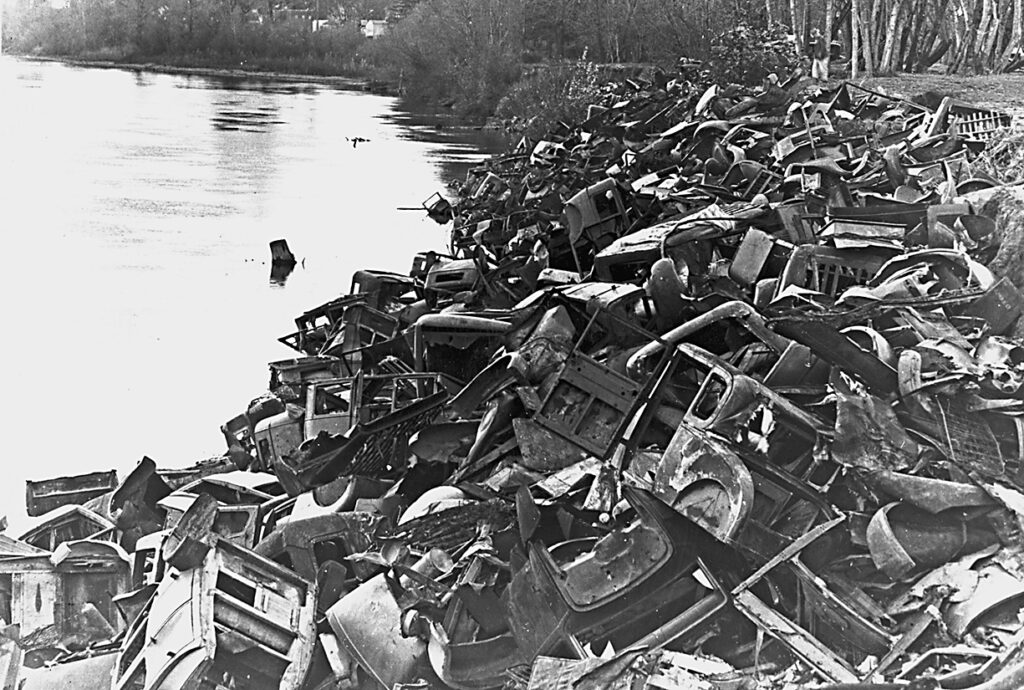
As lawmakers joined together to address a range of environmental threats, Bob’s interest led him to the Oregon coast, where he spent several years working for the US Forest Service in the Oregon Dunes National Recreation Area. Toward the end of the decade, he joined forces with fellow community members to oppose a proposed development on the lower reaches of Big Creek, about twelve miles north of Florence. At the time, the property was home to a rare salt spray meadow with the only known reproducing population of the federally threatened Oregon silverspot butterfly. Surrounding lands supported Roosevelt elk, deer, and black bears, and the creek hosted healthy runs of salmon and steelhead. In 1979, an out-of-state developer purchased nearly two hundred acres of creekfront and planned to build a private resort. Concerned citizens, including hunters, loggers, fisherfolk, housewives, and environmentalists, all came together in opposition of the development. “We took our case to the county Land Use Board,” recalls Bob, “but we didn’t have legal standing.” Unsatisfied, the group continued to press the issue, and in 1983, the Oregon State Supreme Court ruled in favor of Warren v. Lane County, which gave anyone with an interest the legal standing to petition county land use decisions. Though the ruling gave the group the right to oppose the project, the fight to save Big Creek continued for decades. In 2009, The Nature Conservancy in Oregon (TNC) purchased the land from the developer before transferring it to Oregon State Parks in 2015.
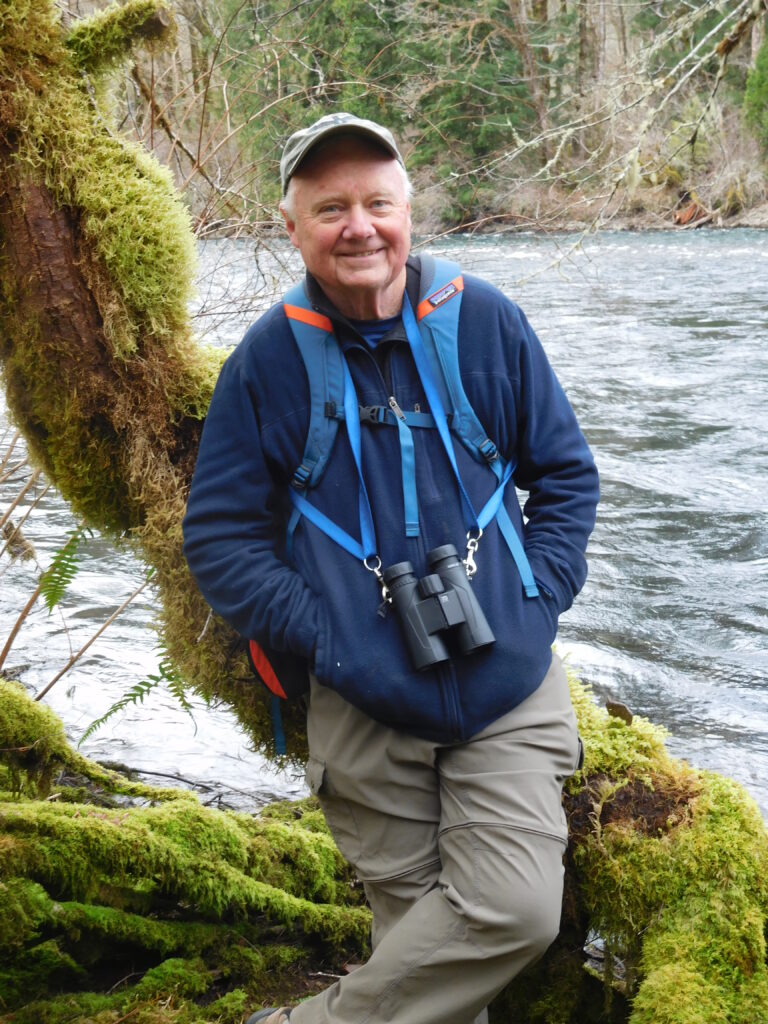
The fight to save Big Creek led Bob to environmental policy work. In 1988, he worked as a member of Congressman Peter DeFazio’s staff as they championed the Omnibus Oregon Wild and Scenic Rivers Act. The Omnibus Act was congressionally funded and designated 41 rivers and 1,221 miles of Oregon’s rivers as a part of the National Wild and Scenic Rivers System. The act included the McKenzie River and was a contributing force behind the founding of McKenzie River Trust in 1989 and the first land protection project in 1990. “I knew early on about the work the Trust was doing on the McKenzie,” shared Bob. “Though I wasn’t directly involved, my role overlapped with the Trust when the US Forest Service took ownership of their first conservation project in the upper McKenzie River watershed (1992).”
“It’s not just talk. The Trust actually does things to maintain and improve the quality of the environment.”
Over the following decades, Bob continued to keep an eye on the Trust while working both inside and outside the State Capitol. Shortly after retiring in 2014, he joined the Board of Directors to help guide and support the organization. “McKenzie River Trust is taking care of where we live,” explains Bob. “It’s not just talk. The Trust actually does things to maintain and improve the quality of the environment. My wife, Mary Maggs, and I could live anywhere, but we chose to live here. The Trust’s work to protect and care for this very special place is an investment in our home and its future. I believe that if you live somewhere, you have the responsibility to make it better, and that is exactly what the McKenzie River Trust does.”
At times, the uncertainty of changing environmental and political climates can feel insurmountable. Still, across our country, sustained efforts to safeguard land and water have resulted in widespread improvements in the health of our communities. Since the first Earth Day in 1970, these efforts have led to a 78% national drop in the combined emissions of the six most common air pollutants and a steadily declining number of unhealthy air days annually. Across the nation, we’ve seen widespread improvements in water quality, including significant decreases in heavy metals, sediment, and phosphorus in rivers and streams. In the last thirty years, the EPA’s power sector programs have seen a 28% decrease in carbon dioxide emissions despite a 26% increase in overall power generation. These changes did not happen because of government regulation alone. They happened because of people like you who have continued to show up, knowing that every action can bring us closer to a better future.
As we celebrate the start of Earth Month and the 55th Anniversary of Earth Day on Tuesday, April 22nd, we extend our appreciation for each of you who has carried forward the spirit of Earth Day through your steadfast commitment to the land and each other. There is still much to be done, but together, our efforts are ensuring a healthier and more resilient future. Thank you for continuing this good work alongside us.
More From the Field
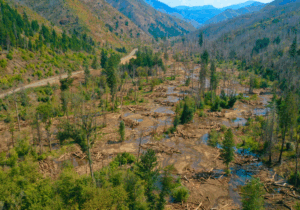
Partnerships at Work in the McKenzie Valley
The completion of restoration at Quartz Creek bolsters a growing network of efforts to protect water and wildlife across the McKenzie River watershed.
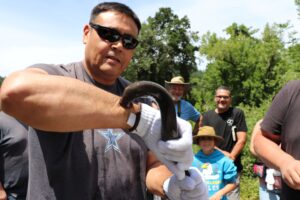
Tribal-led Restoration Efforts Return Ancient Fish to their Historic Habitat
In late June, Pacific Lamprey were released into the upper Long Tom River, marking the first time these ancient fish have swum in this part of the watershed in nearly 100 years. Part of a decades-long restoration initiative, the release was carried out by fisheries staff from the Nez Perce Tribe and the Confederated Tribes of the Umatilla Indian Reservation (CTUIR), who harvested the adult spawning fish at Willamette Falls, collected DNA samples, and then released them into the Long Tom River.
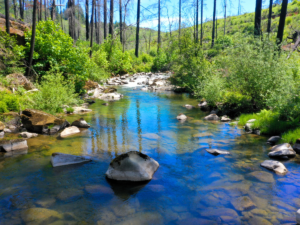
175 Acres Protected Forever on Gate Creek
In May, McKenzie River Trust completed the purchase of 175 acres of high-priority habitat from Weyerhaeuser. This acquisition reflects the strength of thoughtful collaboration between conservation organizations and industry partners as we work to protect special places for Oregon’s communities, who rely on both commercial timber and natural habitats for economic and community health.
